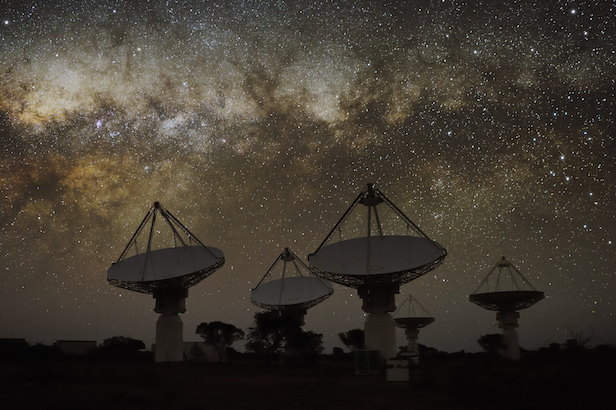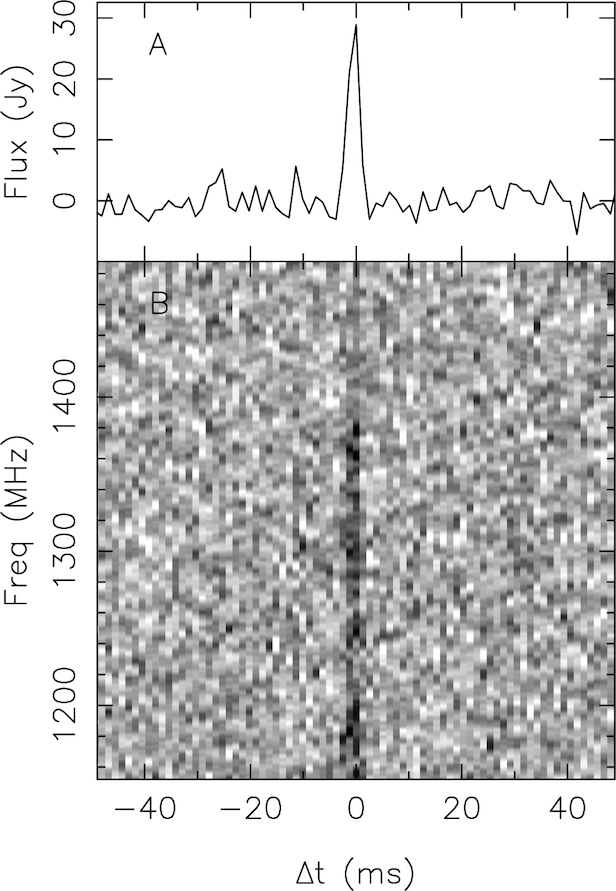Telescope array detects its first radio burst
Australia’s ASKAP has already found a Fast Radio Burst (FRB), just days after the project began

With the Milky Way overhead, the ASKAP array is looking for another FRB. Image credit: Alex Cherney/terrastro.com
Less than four days into its survey of the night sky, the Australian Square Kilometre Array Pathfinder (ASKAP) in Western Australia has detected its first Fast Radio Burst. The event, dubbed FRB 170107, is now the first of many to be detected by the array, with suggestions that the gathering of radio telescopes could be a world leader in detecting radio bursts.
FRBs are extremely short-lived radio waves, which only last a few milliseconds, making them hard to detect. Not only do they last for such a short period of time, they happen at random occurrences, meaning that astronomers usually capture them without planning to.
There have been many hypotheses for FRBs, one possibility is that these bursts are the result of two extremely dense objects (black holes, neutron stars) merging, and releasing a tremendous amount of energy. Some astronomers believe these signals are artificial and they originate from extraterrestrial intelligent life. Having only been discovered in 2007, only 22 FRBs have been detected and it’s no surprise that with such little data on them, our understanding as to how these bursts appear are unclear.

This is the signal of FRB 170107, found in less than 4 days. Image credit: K. Bannister et al.
Dr. Keith Bannister, of the Commonwealth Scientific and Industrial Research Organisation (CSIRO), and his team from Curtin University and the International Centre for Radio Astronomy Research (ICRAR) discovered this FRB while using just eight out of the 36 radio dishes. The search doesn’t stop here though as Dr. Bannister has set his sights on detecting more: “We can expect to find one every two days when we use 12 dishes, our standard number at present,” he explains. The study is all part of the research project called Commensal Real-time ASKAP Fast Transients (CRAFT) survey.
The eight dishes alone can cover an incredible 240 square degrees, which when you consider our full Moon is only 0.2 square degrees of the night sky, that is a vast field covered. In this particular field, FRB 170107 was found in the constellation of Leo at a distance of 6 billion light years. The peculiar thing about this FRB is it must be a source of gigantic amounts of energy, because it is so bright, yet so far away. “We’ve made a hard problem even harder,” says Dr. Ryan Shannon, of CSIRO, Curtin University and ICRAR, who had the pleasure of analysing the strength and position of the burst.
Although these radio bursts seem incredibly confusing, with more and more data collected from the CRAFT research survey, the aim is to get a clearer understanding of these exotic bursts in the universe.
Keep up to date with the latest space news in All About Space – available every month for just £4.99. Alternatively you can subscribe here for a fraction of the price!




